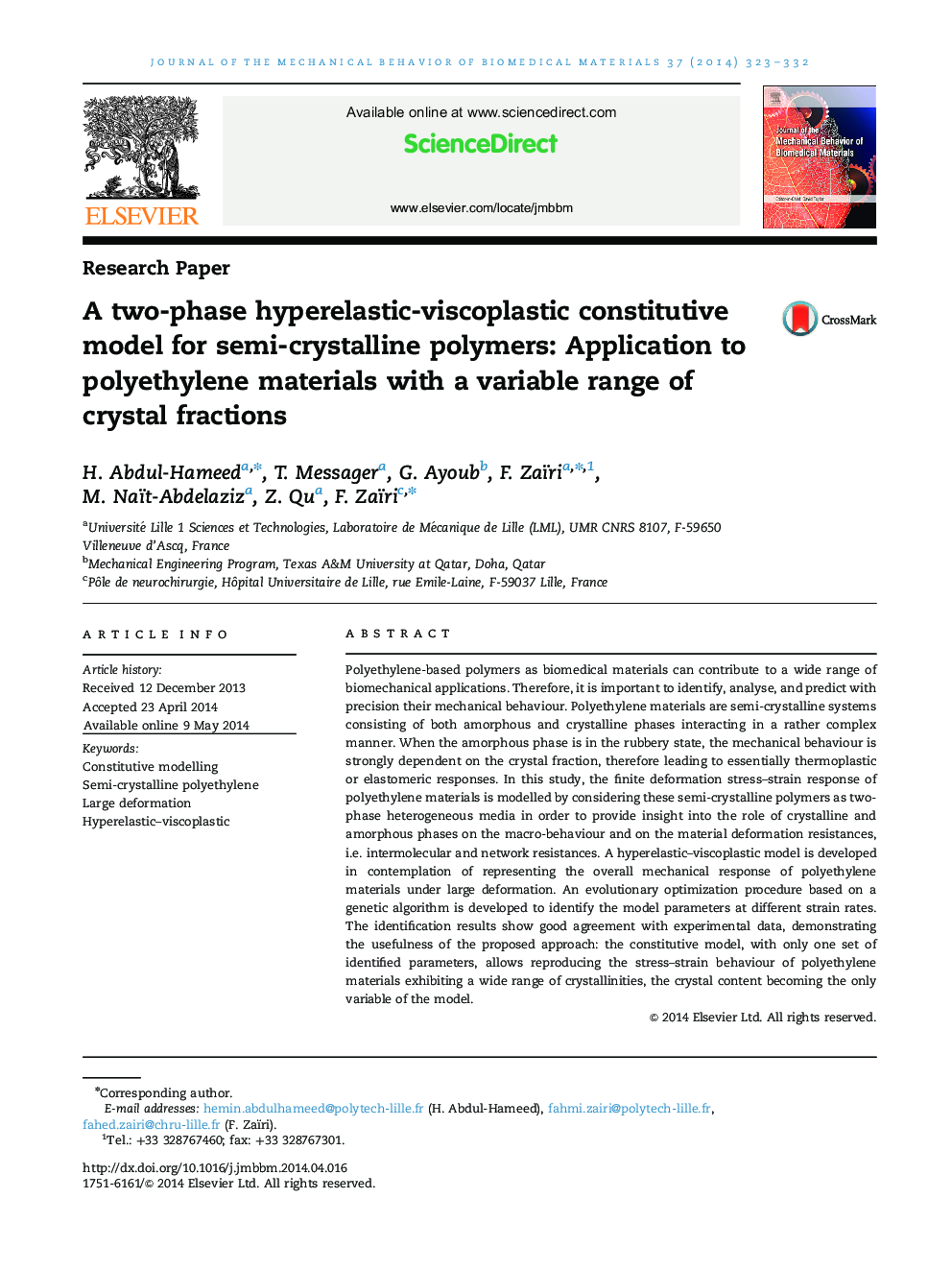| Article ID | Journal | Published Year | Pages | File Type |
|---|---|---|---|---|
| 810743 | Journal of the Mechanical Behavior of Biomedical Materials | 2014 | 10 Pages |
Polyethylene-based polymers as biomedical materials can contribute to a wide range of biomechanical applications. Therefore, it is important to identify, analyse, and predict with precision their mechanical behaviour. Polyethylene materials are semi-crystalline systems consisting of both amorphous and crystalline phases interacting in a rather complex manner. When the amorphous phase is in the rubbery state, the mechanical behaviour is strongly dependent on the crystal fraction, therefore leading to essentially thermoplastic or elastomeric responses. In this study, the finite deformation stress–strain response of polyethylene materials is modelled by considering these semi-crystalline polymers as two-phase heterogeneous media in order to provide insight into the role of crystalline and amorphous phases on the macro-behaviour and on the material deformation resistances, i.e. intermolecular and network resistances. A hyperelastic–viscoplastic model is developed in contemplation of representing the overall mechanical response of polyethylene materials under large deformation. An evolutionary optimization procedure based on a genetic algorithm is developed to identify the model parameters at different strain rates. The identification results show good agreement with experimental data, demonstrating the usefulness of the proposed approach: the constitutive model, with only one set of identified parameters, allows reproducing the stress–strain behaviour of polyethylene materials exhibiting a wide range of crystallinities, the crystal content becoming the only variable of the model.
